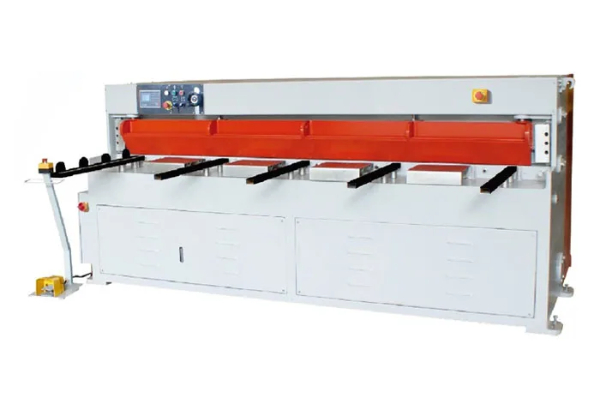
The Science Behind Box and Pan Brake Machines- Precision and Versatility
- By:Metmac
- 2024-09-10
- 171
In the realm of metal fabrication, precision and versatility are paramount. Box and pan brake machines epitomize these traits, enabling the bending of sheet metal into intricate shapes with unparalleled accuracy. This article delves into the scientific principles underlying these remarkable machines, exploring how they achieve their unmatched performance.
Unveiling the Mechanics: Bending Principles
Box and pan brake machines harness the fundamental principles of bending to manipulate sheet metal. As a force is applied perpendicular to the material, the outer layers elongate while the inner layers compress, resulting in a bend. The machine’s bending beam precisely controls the force and angle of bending, ensuring accurate and consistent results.
Engineering Precision: Angle Measurement and Control
To ensure precise bending angles, box and pan brake machines employ advanced angle measurement systems. These systems consist of encoders that monitor the position of the bending beam and feedback the measurements to a controller. The controller then adjusts the beam’s movement in real time, ensuring that the desired bending angle is achieved with utmost accuracy.
Hydraulic Power: Generating Consistent Force
The hydraulic systems in box and pan brake machines provide the necessary force to bend sheet metal. These systems consist of hydraulic cylinders that convert hydraulic pressure into a linear force. The pressure is precisely controlled, ensuring that the bending force is consistent and evenly distributed across the material. This consistency translates into uniform and precise bends.
Tooling Flexibility: Versatile Bending Capabilities
Box and pan brake machines offer remarkable versatility through a wide range of tooling options. These tools include different V-dies and punches, allowing for various bending patterns and radii. The ability to quickly and easily change tools enables fabricators to handle a diverse range of projects, from simple bends to complex shapes and contours.
Application Versatility: A Multifaceted Solution
The versatility of box and pan brake machines extends beyond their bending capabilities. They are widely used in various industries, including:
– Automotive: Fabricating body panels, chassis components, and exhaust systems.
– Electronics: Producing enclosures, chassis, and brackets for electronic devices.
– Construction: Creating roofing, siding, and cladding panels.
– Aerospace: Forming sheet metal components for aircraft and aerospace structures.
Their ability to handle a wide range of materials, including steel, aluminum, stainless steel, and plastics, further enhances their versatility.
Box and pan brake machines are indispensable tools in the metal fabrication industry, combining precision and versatility to produce intricate and accurate bends in sheet metal. By harnessing scientific principles, utilizing advanced control systems, employing versatile tooling options, and catering to diverse industries, these machines empower fabricators to achieve exceptional results with unparalleled efficiency and precision.
-
Advanced Sheet Metal Rolling, Cutting, and Folding Machines for Efficient Fabrication
2025/10/22 -
High-Precision Sheet Metal Bending and Cutting Solutions for Modern Manufacturing
2025/10/22 -
High-Precision Solutions from Leading Sheet Metal Cutting Machine Manufacturers
2025/09/11 -
Reliable Sheet Metal Equipment for Sale to Support Precision Fabrication
2025/07/17
-
Advanced Sheet Metal Rolling, Laser Cutting, and Folding Machines for Precision Fabrication
2025/10/31 -
High-Performance Sheet Metal Bending and Cutting Machines for Modern Fabrication
2025/10/31 -
High-Quality Sheet Metal Equipment for Sale: Efficient Solutions for Modern Manufacturing
2025/10/31 -
High-Performance Sheet Metal Equipment for Sale: Forming and Shearing Solutions for Modern Fabrication
2025/10/22
-
A Guide to the Latest Innovations in Sheet Metal Folding Machines
2024/11/29 -
Key Features to Consider When Investing in a Sheet Metal Folding Machine
2024/11/28 -
Enhancing Precision with Advanced Sheet Metal Folding Machines
2024/11/27 -
How to Choose the Right Sheet Metal Folding Machine for Your Workshop
2024/11/26






